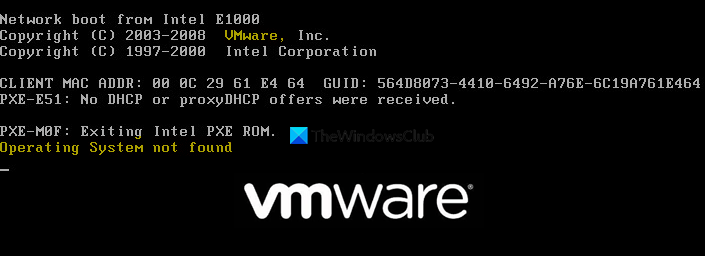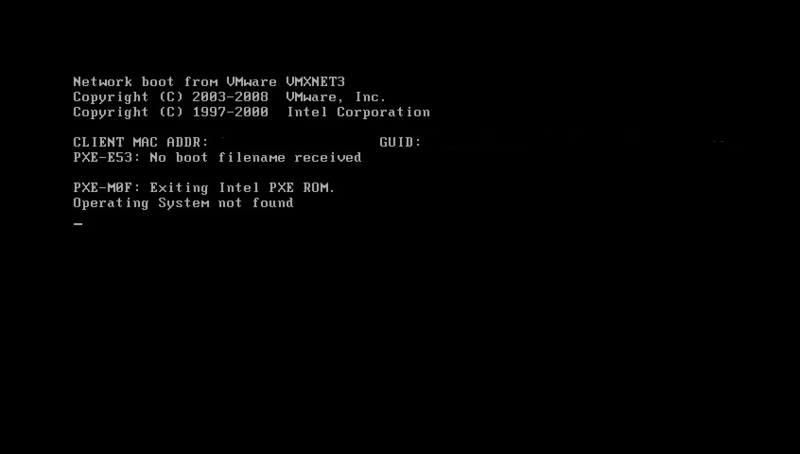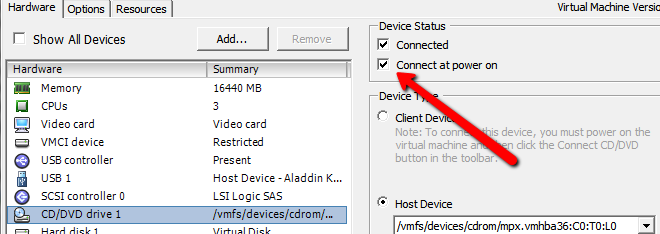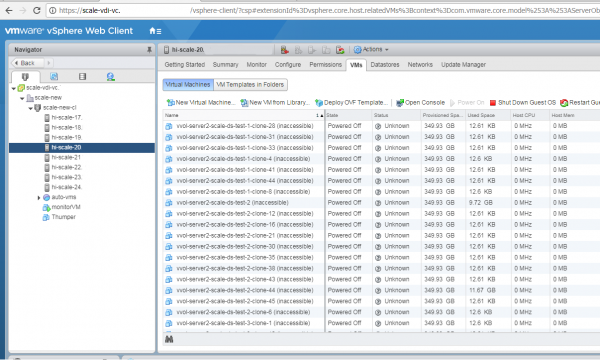operating system not found vmware что делать
Fix: VMware Operating System not Found
Some Windows users that are trying to use VMware Workstation or VMware Player are reporting that they see the “Operating System not found” error during the bootup sequence of the virtual machine. The error is reported to occur when users try to install an OS from a physical drive or from an ISO file. The issue is not exclusive to a certain Windows version since it’s confirmed to occur on Windows 7, Windows 8.1 and Windows 10.

What is causing the “Operating System not found” error?
We looked into this particular issue by analyzing various user reports and the repair strategies that are most effective in resolving this particular error. As it turns out, there are multiple culprits that have the potential of triggering the “Operating System not found” error:
If you’re currently to resolve the same error message, this article will provide you with tested solutions that might just fix the issue for you. Down below, you’ll find several methods that other users encountering the “Operating System not found” error have successfully used to fix this particular issue.
Because the methods below are ordered via their efficiency and difficulty, we advise you to follow them in the order that they are presented. One of them is bound to resolve the issue regardless of the culprit that ends up causing it.
Method 1: Verifying that the ISO is bootable
In most cases, this particular issue occurs with users that are mistakenly trying to use an ISO file that actually contains a package with updates instead of a bootable OS. Keep in mind that you need to use a bootable operating system media in order for the mounting to be successful on your virtual machine.
If you are seeing the “Operating System not found” error when attempting to install an OS file on VMware, start by ensuring that the ISO you’re using is actually bootable. In the event that you determine that the ISO that you are using is not bootable, go for a different option or follow the next method below.
Method 2: Specifying that you’re using a physical device (if applicable)
If you’re trying to install the OS from a bootable disk, chances are you get the “Operating System not found” error because you’ve failed to specify the boot drive. In order to boot from a physical CD/DVD without encountering issues, you’ll need to tell VMware (via the Settings menu) that it needs to boot from a physical CD or DVD.
Here’s a quick guide on how to do this:
If you’re still encountering the “Operating System not found” error, move down to the next method below.
Method 3: Recreating the virtual machine
Some affected users have reported that they were able to resolve the issue by recreating the virtual machine and making sure that BIOS is preferred instead of UEFI. Others that we’re using VM Fusion or VMware workstation have reported that unchecking Easy Install has resolved the issue for them.
Here’s a quick guide on recreating the virtual machine:
If the same “Operating System not found” error is still occurring, move down to the next method below.
Method 4: Ensuring that you get to see the Windows Installer screen
As it turns out, with certain virtual machine configurations the VMware has the potential of attempting to PXE boot and ends up failing because the user is unable to connect with the VM quick enough and press a key at the Press any key to boot into Windows Installer screen quick enough.
If this scenario is applicable, you can resolve the issue by establishing a boot delay of 6 seconds or higher in order to give yourself the time to act during the Press any key to boot into Windows Installer screen.
Here’s a quick guide on how to do this:
Fix VMware operating system not found Boot error
VMware applications are some of the most popular for creating and managing virtual machines. However, it’s not uncommon to see users experience a variety of problems when operating them. For example, when booting a newly created virtual machine, it fails to load but then throws an error message that says the Operating system is not found.
VMware operating system not found
The VMware boot error is not exclusive to specific operating systems or installation media. You can get it when you attempt to install the operating system from a bad ISO file or when installing from physical storage without properly configuring VMware for it.
How to fix this VMware boot error
Here, I’ll show you the general methods used to fix the VMware boot problem. If VMware is unable to find your operating system, you should go over the causes of the issue outlined in the above section.
If you’re not sure how to carry out the above operations, then continue reading this guide. Below are detailed explanations for these solutions.
1] Confirm that the ISO is bootable
You need to mount an ISO file on your virtual machine, and this ISO has to be a bootable OS to work. However, not every ISO files are bootable. Some of them are actually operating system updates.
Therefore, before going into more complex troubleshooting techniques for the VMware boot error, first, confirm that the ISO is bootable. If the ISO is not bootable, then you have to get a bootable one. On the other hand, if you find that the ISO is bootable, you can then begin the repair.
2] Re-create the virtual machine with different settings
If you’re using a bootable ISO, and VMWare cannot find your operating system, a second suspect it that the machine isn’t configured with UEFI. In the course of creating the VM, if you selected UEFI, you are likely to run into these boot errors. You need to go back, create a new virtual machine, and set it to BIOS and not UEFI. Here’s what to do:
Launch VMware and from the left-hand menu, go to Home. Select New Virtual Machine from the right section and hit Next.
Choose the installation source and then hit the Next button. If you use VM Fusion or VMware workstation, unmark the Easy Install checkbox.
Select your preferred type of virtual machine based on the hardware of the host operating system. Now, select Custom from the next page where you are asked to choose between Typical and Custom.
Name the new virtual machine and select the directory to save it.
Modify the maximum disk size and select how you want to store the virtual disk. Click the Next button.
You can configure the hardware settings any way you seem fit or leave the default settings. Finally, click on the Finish button.
At this point, you can run the new virtual machine to check that the boot error no longer shows up.
3] If installing from a physical drive, let VMware know
Many users who install operating systems from a bootable disk run into the Operating system not found boot error because they didn’t point out the drive from which to boot. To prevent this problem, VMware should be aware that you’re installing it from that specific drive.
Launch the VMware application. Right-click on the problematic virtual machine and click on Settings.
Navigate to the Hardware tab and select CD/DVD (SATA) from the list of devices.
Change the Connection to Use physical drive.
Click on the dropdown menu and choose the drive that contains the ISO file. Strike the OK button to save your settings.
4] Increase the PXE boot delay period
The configuration of your virtual machine could cause VMware to attempt to PXE boot. This could be the root of the boot error you’re experiencing because you may not be able to get into the Windows Installer screen fast enough.
VMware allows you only a brief window to press any key to boot into Windows Installer. Therefore, a great way to tackle this issue is to increase the boot delay to 6 seconds or more.
First, shut down all open virtual machines and then close the VMware application.
Launch File Explorer and go to the following directory:
Remember to replace the [your username] part in the path above to your actual user account name.
In this directory, double-click on the folder of the specific machine that’s giving issues and find its .VMX file. Open this file with a smart text editor (such as Notepad ++).
This guide will help you show file extensions in the folder if you do not see them.
In the open document, go to the bottom end of the text and then paste the code below:
Save the document now and close your text editor.
Let us know if this worked for you.
Date: September 25, 2020 Tags: Boot, Virtual
How to Fix: VMware Operating System not Found
Update: Stop getting error messages and slow down your system with our optimization tool. Get it now at this link
Some Windows users trying to use VMware Workstation or VMware Player report that they see the “Operating System Not Found” error when starting the virtual machine. The error is reported when users attempt to install an operating system from a physical disk or ISO file. The problem is not exclusive to a particular version of Windows because it has been confirmed on Windows 7, Windows 8.1 and Windows 10.
ISO connection to a virtual machine
To resolve the “Operating system not found” error when powering up the virtual machine you just created, you must connect the device/ISO to the virtual machine.
Recreating the virtual machine
Some concerned users indicated that they had succeeded in solving the problem by rebuilding the virtual machine and ensuring that BIOS was preferred to UEFI. Others that we use with VM Fusion or VMware Workstation reported that disabling Easy Install fixed the problem for them.
November 2021 Update:
Here is a brief guide to restoring the virtual machine:
Reload the VMX file
To reload the.vmx file, please follow the following steps:
# vim-cmd vmsvc/reload Vmid
CONCLUSION
The reason for this problem is that the VM tries to boot from the first SCSI device, and since the new empty virtual disk I added was the first SCSI device, the system could not boot.
If you have any questions, please let us know in the comment field below.
CCNA, Web Developer, PC Troubleshooter
I am a computer enthusiast and a practicing IT Professional. I have years of experience behind me in computer programming, hardware troubleshooting and repair. I specialise in Web Development and Database Design. I also have a CCNA certification for Network Design and Troubleshooting.
VMware VSphere ESXI 5.5: «Operating system not found»
Hey guys, so virtualization is new for me and boss finally let me setup a test server. I installed VMware ESXI 5.5 and I’m have an issue and I can’t find help online that is useful. He told me to install an Ubuntu virtual machine and I did. I have the ISO for it but it keeps saying the above error. I’m on a 32 bit machine trying to install a 32 bit virtual machine with the 32 bit ISO. Thanks in advance.
You have it connected to a client device. Do you have a CD-Rom in your machines drive? Have you click on «connect cd/dvd» in the toolbar?
If not, that’s the reason.
The easiest option is to just copy the ISO you download to the datastore and connect it. There isn’t a need to burn it to a CD/DVD or anything.
25 Replies
Have you connected the ISO to the VM?
The VM’s boot order is CD-ROM, Disk, PXE so it suggests to me that you’ve created the VM but not attached the ISO to it.
You’re missing your MBR. are you booting from the ISO or have you already installed?
If it’s the ISO, does the MD5 check out?
Have you connected the ISO to the VM?
The VM’s boot order is CD-ROM, Disk, PXE so it suggests to me that you’ve created the VM but not attached the ISO to it.
Good call. if you have the ISO in the datastore, the «connected» box isn’t checked by default
Have you connected the ISO to the VM?
The VM’s boot order is CD-ROM, Disk, PXE so it suggests to me that you’ve created the VM but not attached the ISO to it.
I went to «Edit virtual machine settings»>chose CD/DVD>Client device>OK>Connect CD/DVD of the virtual machine>Connect to ISO image on local disk
Hey guys, so virtualization is new for me and boss finally let me setup a test server. I installed VMware ESXI 5.5 and I’m have an issue and I can’t find help online that is useful. He told me to install an Ubuntu virtual machine and I did. I have the ISO for it but it keeps saying the above error. I’m on a 32 bit machine trying to install a 32 bit virtual machine with the 32 bit ISO. Thanks in advance.
You could also make a bootable CD/DVD, Use a software called ImageBurn:
There should be an option to connect a CD/DVD drive(host) under Edit settings in vSphere. Reboot the VM and when it boots up again, it should detect the CD and start the bootup process.
Have you connected the ISO to the VM?
The VM’s boot order is CD-ROM, Disk, PXE so it suggests to me that you’ve created the VM but not attached the ISO to it.
I went to «Edit virtual machine settings»>chose CD/DVD>Client device>OK>Connect CD/DVD of the virtual machine>Connect to ISO image on local disk
And it’s ticked to connect on power on?
Hit ctrl+t in the console screen to reset it and see if it boots from CD.
If it doesn’t, try hitting F12 at the boot screen and selecting «boot from CD»
You could also make a bootable CD/DVD, Use a software called ImageBurn:
There should be an option to connect a CD/DVD drive(host) under Edit settings in vSphere. Reboot the VM and when it boots up again, it should detect the CD and start the bootup process.
Yeah, I was going to try that next but I wanted to figure out why this isn’t working. I watched several guys do it on you tube but I’m having the problems.
Pretty sure Gary’s right here. If it still won’t boot, try a Windows ISO.
I am really sure Gary is right here, I had the same error. There is a small(ish) box that has to be checked that tells the vm to connect to the CD/DVD drive at startup.
If you know the ISO is connected, Do as Carl said and run an MD5 on the iso and make sure the ISO is a good download.
And it’s ticked to connect on power on?
Hit ctrl+t in the console screen to reset it and see if it boots from CD.
If it doesn’t, try hitting F12 at the boot screen and selecting «boot from CD»
I did reset it a few times and F12 didn’t do anything.
The host device option said no devices available
You have it connected to a client device. Do you have a CD-Rom in your machines drive? Have you click on «connect cd/dvd» in the toolbar?
If not, that’s the reason.
The easiest option is to just copy the ISO you download to the datastore and connect it. There isn’t a need to burn it to a CD/DVD or anything.
Click the button that says Host Device. your cd/dvd should be there.
Should look like this
If the ISO is in the datastore, select «Datastore ISO file» and browse for it. Then ensure that «Connect at power on» is selected. Reboot the VM and it should work.
I didn’t know about downloading it to the datastore. I did that and still didn’t work but then Miami56 reminded me, after Gary already said it, about checking the connect at power on and it worked. Thank all you guys!
With all my VMWare environments I have a central ISO datastore for these files. Makes life a lot easier.
With all my VMWare environments I have a central ISO datastore for these files. Makes life a lot easier.
I sometimes do, but only for things that I install over and over. If it’s a one-off and I’m on the LAN, I’ll do it from the client machine.
I’m having a similar problem right now. My brand new VM on a ESXi 5.5 server won’t mount the CD/DVD drive either.
There is no drive on the server. The VMWare Integration Plug-in isn’t doing it’s job no more than giving me a console. The VM has the option to install it along side the «mount local CD/DVD drive and Mound an ISO from a datastore.
The only option that I can get the farthest down the road on is «Mount and ISO from a datastore», but again, the drive never seems to be active.
In the VM Boot section, the CD-DRIVE never has a plus next to it.
It tries to boot of the network and then finally says, «no operating system.»
VMware Operating System Not Found! How to Fix It? [MiniTool News]
By Stella | Follow | Last Updated December 15, 2020
Summary :
Are you bothered by VMware operating system not found when you want to install the VMware OS using an ISO file or a physical drive? Do you know how to fix this issue? If no, you can read this post because MiniTool Software will show you the main causes and how to fix this issue in different cases.
If you are a user of VMware Workstation or VMware Player, you may encounter the issue of VMware operating system not found. This issue always happens when you are trying to install an OS from a physical installation driver or an ISO file.
When VMware OS not found, you will go to a black screen with an error message saying Operating System not found. The following screenshot message is an example.
Reasons for Operating System Not Found VMware
Why does this issue happen? Here, we will show you some main causes.
The ISO File Is Unbootable
This is a very common reason. The issue happens when you want to use an ISO file that is not bootable. In a situation like this, you need to use another copy of the ISO file that is bootable to install OS on your VMware Workstation or VMware Player.
Your VMware Is Not Set to Boot from the Physical Drive
If you are trying to install OS using a physical drive, you need to set your VMware to boot from that drive. If not, VMware operating system not found can happen. So, you need to shut down your VMware and then boot it from that drive to have a try.
The VM Files Are Corrupted
Some VM files that are involving in OS startup may be corrupted, causing the issue of operating system not found VMware. You need to recreate the virtual machine to have a try.
PXE Boot Period Is Too Short
Now, we will show you how to solve this issue in different situations.
How to Fix VMware Operating System Not Found?
#1. Check Whether the ISO File Is Bootable
If you want to install the VMware OS using an ISO file, you need to make sure that the ISO file is bootable. Perhaps, sometimes, the file you use just contains a package of some update that is not bootable. So, you can just make a confirmation to rule out this possibility.
#2. Set Your VMware to Boot from the Target Physical Drive
If you want to install the VMware OS from a physical drive, you need to make your VMware boot from that drive. Here is what you need to do:
#3. Recreate the VMware Machine
Some users reported that they solve the issue (especially the VMware fusion operating system not found issue) by recreating the VMware machine. You can also use this method to have a try.
#4. Check Whether You Can See the Windows Installer Screen
If the PXE boot period is too short, you may not see the Windows installer screen and select the drive you want to boot from during the startup process. But, you can manually set a boot delay of 6 seconds or even longer to make you have time to press any key to boot into the Windows installer.
Here is the thing you need to do:
After this setting, you can reboot your VMware machine to see whether the VMware operating system not found issue is solved.
We hope these solutions can help you solve the issue you are facing. If you are facing some related issues, you can let us know in the comment.
ABOUT THE AUTHOR
Position: Columnist
Stella has been working in MiniTool Software as an English Editor for more than 4 years. Her articles mainly cover the fields of data recovery including storage media data recovery and phone data recovery, YouTube videos download, partition management, and video conversions.


























